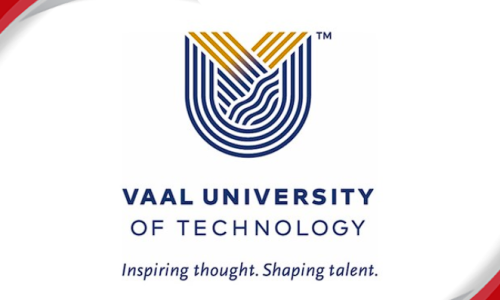Re-Embracing the Work of Fundraising

Re-Embracing the Work of Fundraising
- |
-
Jul 28, 2023
While I have seen a great many articles on the decline in charitable giving, it is striking how rarely the work of fundraising itself is mentioned as part of the problem. Amazing right? Imagine talking about a decline in agriculture but not talking about farmers. But while most discussions of the problem focus on the donor, there are two parts of the process of giving, and the fundraiser is no less crucial. And after 37 years in nonprofit fundraising, I can say that the field of nonprofit fundraising has some chronic problems that impact giving, which are, for this reason, commonly overlooked.
The profession and practice of fundraising stretches across thousands of American nonprofits, from small one-person “shops” of development officers to large teams with dozens of fundraisers. There are many methods of fundraising and people who do them: Major Giving, Direct Marketing, Giving Circles, Planned Giving, and many others. There are fundraisers in large institutions like universities and hospitals, and also at small organizations.
I love fundraising. Fundraising is beautiful. Those committed to our profession know the work we do is changing the world for the better. And it’s because our hearts are rich with the impact of our work that I want to improve what we do.
So what’s the problem?
1. Fundraising is an abused profession. If this is a harsh thing to say, I want you to remember one statistic: fundraisers have an average tenure in their jobs of 16 months. The top reason for leaving is “unrealistic expectations.” Underdeveloped: A National Study of Challenges Facing Nonprofit Fundraising documents the unrealistic goals set by people who know little about the work of fundraising, the limited resources devoted for a demanding job, and the lack of appreciation that I and many fundraisers have experienced our whole careers. And while I have had great jobs, I have also had experiences like a goal being set three times what we could raise by a board member who had never reviewed our budget and who said so openly, saying that he “just thought” an organization like ours should “reach high.” It decimated morale and we never got close.
How do you increase giving when we treat fundraisers badly? I have written whole articles about this subject (for example). But while our profession is widely misunderstood and undervalued, we are also largely silent: Fundraisers who speak up about any of this don’t keep their jobs. We have a culture of silence, so, it’s not uncommon to see fundraisers not included in discussions of philanthropy. Meanwhile, plenty of folks love to talk about fundraising who have never raised a dime in their lives, people who have “done” fundraising but have never called it a profession and done it full time. When it comes to fundraising comments, always consider the source.
2. Straight Old White Men | Fundraising is one of the least diverse professions, focused heavily on one demographic. In cities full of Latino wealth like the Bay Area, you can see no Latino major donors in nonprofit roles, few Latino board members, and nonprofit websites with no programs in the Latino community. If we want more giving how about stop walking past 20 percent of the population? (Not to mention other groups). This is a fixable problem: I had one position in healthcare where I had the time and resources to build a small Latinx Major Giving pool of donors; another time I raised a seven-figure gifts for the arts from a Mexican American. This wasn’t brilliant work on my part; it was simply the intentionality of that fundraising that made that happen. Nothing is stopping others from following suit.
That the United States is changing demographically—but fundraising and nonprofits have not—must be a factor in the decline of giving. Multi-cultural and multilingual donor education is desperately needed. But we cannot just ask people for money. We need to do the full cycle of fundraising with people of color. We need to ask: are our organizations known and respected in new donor communities? If we ask people for organizations that they have never heard of what do we expect to be the result?
Ins short, we need to support organizations focused on people of color to improve their fundraising, empower their own communities to give to their own causes, causes they live (not just read about in a book): education, health, women’s rights, the environment, voting rights, LGBTQ rights and much more. And while we can tend to see these populations as victims, rather than the agents of their own change, giving is empowering.
3. Underinvestment | Most nonprofits treat fundraising like a necessary evil, which means they avoid, underinvest in, and thereby undermine their own fundraising. If they have money, they spend it on programs first, and think of fundraising simply as grant writing, having no idea of the many types of fundraising there are (along with deeply negative attitudes about fundraising and fundraisers from people who need it to succeed).
Because nonprofits don’t want to think about fundraising, one of the worst things a fundraiser can do is succeed. Twice in my career, I was fortunate enough to bring in a big gift, only to have leadership—who knew nothing about fundraising work—simply demand more money. They thought this way because they didn’t understand the internal workings of fundraising. They thought it was simply asking rich people for money. When there is so much more involved.
There is no reason for nonprofits to treat fundraising this way. When you see institutions invest in fundraising, they have no problem with giving. Last year, for example, university giving went up by 12.5 percent, and it’s easy to understand why: they invest deeply in fundraising with money, staff, time, and expertise. No decline in giving there.
4. No New Givers | “Prospecting” is a part of fundraising that only wealthy big institutions seem to think they can afford. But it’s literally just going out and finding new donors. It takes a lot of time, shoe leather, and meetings. But while it’s slow and expensive, it’s the only way to grow your donor list (and in many cases, it means launching new philanthropists through your work). And only organizations that invest in prospecting thrive in the long term. This makes is all the more strange to see the decline in giving being discussed while some nonprofits are growing their giving. But they have a board that gets it, digs deep in their pockets, hires a team, and gives them time and respect.
Most nonprofit boards don’t know enough about fundraising to support prospecting. They lose patience with what seems like a waste of time. But prospecting is essential to growing giving. ; nonprofits who understand this will grow, and raise new giving.
5. Professional Undevelopment | Professional development for fundraisers is usually designed for wealthy institutions. It not only requires conferences and training, but the vast majority of fundraising training is designed for large nonprofits, because that’s who has the budget. As a result, small- and medium-sized nonprofits simply have few ways to learn how to grow their fundraising. So how do they increase their giving if they don’t know how? They don’t. Instead of creating new givers, they mail out blind grant applications.
This lack of professional development opportunities means the majority of nonprofit fundraisers are untrained. When organizations think there is no profession in fundraising, and that anyone can do it, institutions deny professional development for fundraisers while their program colleagues attend conference after conference. I help lead the first Latinx Fundraising Institute, Somos El Poder, and 90 percent of the fundraisers we train have never had any type of fundraising training. They are simply put in jobs and told to raise money.
Foundations and funders need to generously support professional development in fundraising, especially for organizations focused on disadvantaged communities. Latinos are unique in this area in that they have tremendous giving ability that has been untapped by Latino community groups themselves. I estimate that Latinos have an annual giving ability of $24.7 billion a year. But how can they unleash that giving power without learning how to fundraise?
Giving comes from fundraising.
Fundraising has some chronic and historic problems that need to be addressed, but there are also pressing new problems, as veteran, experienced fundraisers are leaving the profession after Covid 19. Many got their nonprofits through the pandemic only to receive little thanks and increasingly unrealistic demands for higher goals. They are fed up and the nonprofits that lose them never seem to understand their role or how their actions made them leave.
So … what can be done? Funders and foundations can be powerful catalysts:
- Fund and support professional development in fundraising, especially in organizations focused on people of color. Start counting fundraising as “infrastructure,” and look for culturally relevant training and support. There are plenty of expensive fundraising consulting firms that want to “serve BIPOC communities,” but each community is different, and what works for one community won’t be the same for another. So be cautious. There is no one size fits all.
- Require the boards of directors of your grantees to go through real fundraising training, where they learn the cycle of fundraising. I assess board training on fundraising by looking for the tough messages. That it takes time, that it’s the board’s responsibility, where they train around major giving. Quick overviews don’t work.
- Ask grantees or potential grantees for a complex and diverse fundraising plan, one that builds self-reliance and decreases dependency on grants. Look at the budget and staff investments in fundraising: Is there a fundraising team? Or just one development director with three jobs in their description?
- Support nonprofits with diverse, token-free boards of directors that look like the communities they serve. Building a diverse, giving, and influential board is a matter of doing good research and outreach, and once you diversify a board it changes the organization. It’s a great indicator of who is good at posting DEI statements and who actually does it.
- Underwrite and endow development positions at small and medium nonprofits. I have seen this done a few times in my career. Development positions are fragile, they are quick to cut, quick to be downgraded. Underwriting one is a powerful investment for long-term financial growth for any nonprofit.
Fundraising is the power of people to do good. Can you imagine even if a few of these changes were made? If attitudes toward fundraising changed? If our nonprofit leaders, if the public began to honor fundraisers for the remarkable and beautiful work they do? The capacity for giving in the US today is immense, and that’s the capacity to change this country for the better: to fight climate change, stop injustice, support immigrants, defend women’s rights, fund big scholarships, and so much more. Improving fundraising is improving this country. Let’s get to work!
Add a Comment
Related Resources
Get New Jobs Notification!
Sign up with your email address to receive news and updates. Subscribe to get our latest content by email. We respect your privacy, Unsubscribe at any time.

























Comments